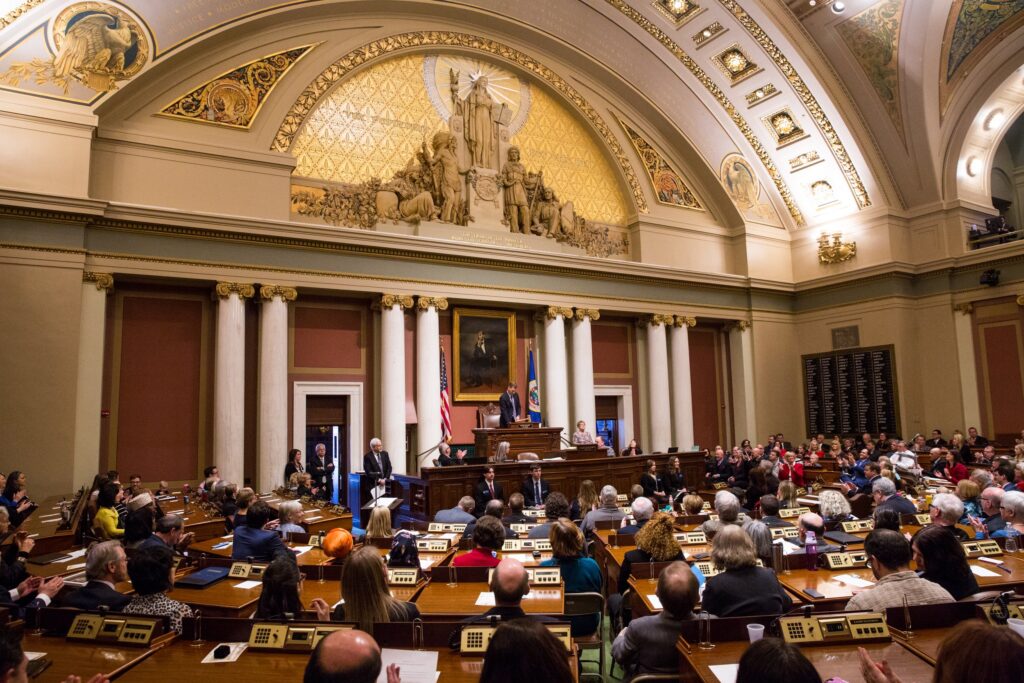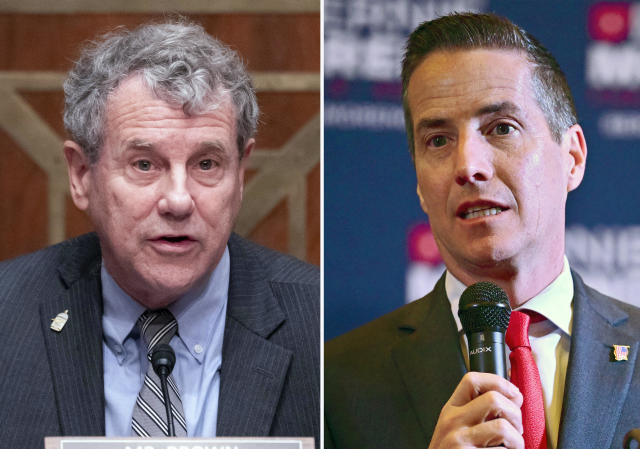The Virginia Senate Election also regarded as one of the leading political forecasters, especially at both statewide and national levels. From past years, Virginia was deemed one of the states whose election results can help draw conclusions about the current or coming political trends in that country. This was an especially crucial Senate race this year-one that reflects the shifts and surprises of the moment and that points to larger trends in American politics. The article will delve into the unexpected results, dynamics at play, and what changes may have on Virginia and the United States.
A Closely Watched Race
The Virginia Senate race was watched keenly for a number of reasons. Virginia has been a “purple” state, swinging back and forth between Democratic and Republican control in recent years, but the balance between the two often makes it something of a bellwether for the general mood of the country, especially at midterm, when voter turnout and engagement tend to be reflective of general satisfaction or dissatisfaction with the administration of the day.
It is a bellwether for the next presidential election cycle, so political analysts and national media were very interested in following the race. Virginia voter demographics are a mix of urban, suburban, and rural populations with a diverse racial and economic landscape reflective of many factors in the national political conversation.
Key Candidates and Their Platforms
The campaign involved a Democratic incumbent senator facing off against a Republican challenger with a new face and the ability to bring fresh energy into the race. The Democrat was known, having served many years in state and national politics; his campaign was run on the basis of stability, economic growth, and social programs. His experience was a central component of his campaign, as he stressed commitment to working for all Virginians and to continuing the progress that he believes has been achieved under Democratic leadership.
In contrast, the Republican challenger was a much younger candidate whose campaign theme was that of change and reform. His policy relied on lower taxes, reduction of government intervention, and concern for public safety, winning the hearts of the citizens who feel that the government has failed to manage issues of rising costs and rising safety concerns. The more conservative approach to governance resonated with the voters.
Such styles and media differed between these candidates. Such made the campaign extremely sharp in terms of intensity; aggressive advertising by the camps added a lot to both races, so that voters’ preferences for either candidate resulted in one of the hottestly debated and most publicly marketed senate races Virginia has ever known.
Unanticipated voter patterns:
The most shocking thing about this election was the turnout. Normally, midterm elections have low voter engagement compared to the presidential election years, but not this year. Virginia’s urban areas had the highest turnout, particularly in cities like Richmond, Alexandria, and Arlington. These were traditionally Democratic strongholds that came out in large numbers to support the incumbent on issues like healthcare, education, and environmental protection.
Turnout in Virginia’s rural areas was also higher than forecasted on the other side. Republican voters, motivated by concerns over economic challenges, inflation, and crime rates, rallied in strong numbers to support the challenger. This increased rural turnout suggested a rising dissatisfaction with the current administration and a desire for a shift in political priorities.
The intensified participation by voters from both urban and rural centers shows that Virginians have only just begun to experience national issues on a local level, hence being all the more ravenous for the changes to better their daily worries.
Surprising Outcomes and Shifts
As the votes were counted, it was clear that the result would be far from what most people would have anticipated. The Democrat incumbent had been a shoo-in because of his years of experience and reputation, but the election results reflected a much closer contest than anyone had anticipated. In fact, the two candidates received nearly an equal amount of the vote, much to the surprise of many political analysts who had predicted a more decisive outcome.
However, in the suburbs, a battleground area for politics within the state of Virginia, was seen to shift. Suburbs who have traditionally been part of Democratic voting blocks had begun to trend towards Republican voting patterns, with large concerns regarding inflation and a rising cost of living serving as drivers for these patterns. Suburban shifts do reflect broader national trends within voters and their selections, as people look less at traditional party affiliations in making choices but rather in economic reasons.
This tight race for the Republican candidate in the suburbs offers a possibility of realignment that may be far-reaching in implications, not only for Virginia but for the whole country. In case this trend continues, then Republicans will have a bright chance of winning future elections in different parts of the country as the suburbs have been a bastion of Democratic votes in the past.
Reasons for the Tight Contest
The Virginia contest is a close race. The key reason is the economy. First, the inflation rate is up, and housing costs have increased, which are critical issues for voters. Most voters who feel that the administration has not done enough on the economic front welcome the message that the Republican candidate will implement economic reform and cut taxes.
Public safety is another critical factor. The increased crime rates and public safety matters in some parts have shifted the electorates from other issues. For instance, the campaign by the Republican candidate to increase police force in order to fight public security issues made elect most the voters because of the dreads of such issues.
Lastly, a strong divide in voter preference by generation cuts the decision: younger voters trend Democratic, especially on issues like climate change and social justice, while older voters embrace the Republican platform, considering it superior to their economic and security-related concerns.

Political Landscape Impact
Virginia’s political landscape is shifting, according to elections. The close results, therefore, reveal an increasingly divided electorate on key issues and the challenges both parties face in appealing to the broad range of voters that are essential to win the electoral vote. Democrats may need to speak more directly to economic concerns to retain support in suburban and rural areas, while Republicans have to continue building on their recent gains in the suburbs to provide a firmer foundation for themselves.
It is a battleground state that might change the way each party conducts the presidential election. This may mean more resource input, especially on issues relevant to Virginians, to set a tone for its overall strategy through this election.
National Politics Takeaways
There are some important lessons to take from Virginia’s Senate election regarding national politics. The close results reflect a polarized electorate, where voters are increasingly dividing along ideological and geographic lines. For Democrats, the Virginia race serves as a reminder that economic and public safety concerns must be addressed more vigorously if they want to keep their coalition intact. For Republicans, the strong showing in suburban areas presents a pathway to possible success in states where they previously failed to get their footing.
This election also points to the fact that voters need to be engaged. Higher-than-expected turnouts in both urban and rural areas indicate that voters are motivated by the impact of national issues on their daily lives. This may be a harbinger that voter turnout might continue to rise in subsequent elections as more Americans get sensitized to the power of their vote in shaping local and national policies.
The Road Ahead for Virginia
The result of this election will condition Virginia’s political landscape for years ahead. For a more segmented electorate, future campaigns will be competitive on issues that have come to highlight what matters: economic stability, public safety, and accessibility to healthcare. It is a change both parties must undergo in order to begin winning support in Virginia’s increasingly variegated, issue-driven electorate.
The challenge that elected officials in Virginia are currently facing is to bring both worlds together and listen to the needs of voters in both the cities and the countryside. This election reminds us that Virginia is not a homogeneous state, but a mix of different communities with different priorities and concerns. For Virginia’s leaders to lead effectively, they need to listen to and serve the diverse interests of all Virginians by finding common ground where they can.
Many ways the outcome of this election reads as a miniature for what’s happening around the rest of the country. The coming election cycle of this great nation will both parties should recall what happened in Virginia in terms of changes by multiple voices that make a map anew. The shocking change or the swing and about faces that happened within the senatorial election suggest modernity and complexities about what must happen in such elections nowadays. In these politics today, every vote is decisive, and everything is about the issues at stake.



![Matsumoto Hitoshi: Comedy Superstar and Versatile Entertainer [松本人志] 2024](https://multitime.online/wp-content/uploads/2024/11/d7938453-96x96.jpg)